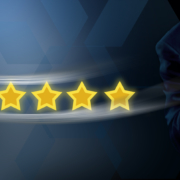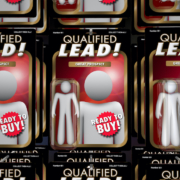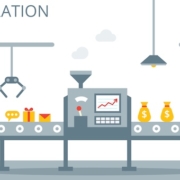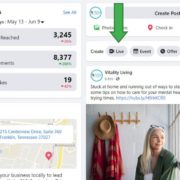Senior Living Reputation Management: How to Respond to Reviews
Your senior living community’s online reputation is everything. In fact, it might be the only thing that matters. Perception is reality and all that. Not to mention online reviews almost always come up in local search results. That’s why when it comes to senior living reputation management, you MUST have a strategy for responding to reviews.
We’ve written a couple articles about managing your overall online reputation, including claiming listings and soliciting reviews. But today we’re going to get into the nitty-gritty of how to respond to those pesky one- and two-star reviews.
1. Never argue.
When we say never, we mean NEVER. Not even if you feel the review is unfair. Not even if you know the review is inaccurate. A combative response will cause more damage. Why? Because other people will see your belligerent response. This will influence their decision—and not in a good way.
2. Keep in mind that critical feedback isn’t always negative.
We all tend to think of one-star reviews as “bad.” But negative reviews provide opportunity. Your critics are giving you a gift: an unfiltered, unvarnished view of your community’s weaknesses. If you pay attention to your reviews and address legitimate issues revealed within them, your community will ultimately be in a better, stronger, more competitive position.
What should you pay attention to in one- and two-star reviews? Look for trends. Look for consistent complaints. If you’re hearing the same complaint in multiple reviews, you can no longer claim it’s simply one disgruntled person’s “opinion.” Uncover the core issue and address it.
3. Be genuine in your response.
- Acknowledge the person’s pain/criticism. Again, don’t argue. Don’t make condescending statements like “We’re sorry you feel this way.” Instead, opt for something that sounds human: “Chris, we’re sorry to hear your mom isn’t happy with X. We’re sharing your feedback with the team. If you’d like to tell us more, we welcome your additional input. You can reach us here.” (Provide a real phone number and extension. Make sure someone monitors the messages and passes on messages to the appropriate person in your community.)
- Do not end your response with “Have a great day.” It sounds silly to say something like: “We’re sorry to hear about your experience. Have a great day!” Try this instead: “Even though it’s hard to hear, we do appreciate your candid feedback. We’re discussing your review internally so we can address these issues.”
- Don’t say the same thing in every response. People scroll through reviews. If people see the same response on every review, well—that doesn’t sound genuine, does it?
- Respond to positive reviews, too! A warm “Thank you” is always welcome on a positive review. You’ll follow the same suggestions outlined above. Acknowledge what the person liked. Don’t say the same thing in every response. And sound genuine.
Need inspiration? Here are real examples of great responses to negative Yelp reviews.
4. Run your response by a committee before hitting publish.
Get in the habit of drafting a response to a critical review and sharing it with a couple members of your team. Why? Just to get a second opinion and a second set of eyes on the response. The problem with responding in writing is the tone issue. The person who writes the response can’t always “hear” if something might come across as snarky or defensive. When it comes to senior living reputation management, take a team approach.
5. Accept that negative reviews are part of doing business.
Your senior living community will get negative reviews. It’s a part of doing business. Your focus should be on responding thoughtfully to these critical reviews and addressing issues, as needed.
SeniorLivingAdvisor.com notes this in its FAQs: “Consumers do not expect every customer will have an ideal experience with any service provider. In fact, consumers tend to trust reviews more when they see both positive and negative feedback. What is important to those searching for senior care is that the organization acknowledges and addresses concerns.”
6. Flag any reviews that are truly inappropriate.
While you should never respond to negative reviews, your community—and the people reading the reviews—shouldn’t have to endure violent, abusive, racist, or other toxic language. Most review sites offer a way to flag/report/dispute problematic reviews. You won’t use this for someone who is irate about a legitimate issue. People have a right to vent their frustration. But if a reviewer ever crosses a line, you can ask to have the review removed.
An important note: People reading reviews will be able to read between the lines. Most of us can easily identify an incoherent rant when we spot one. And most of us won’t put much stock into those sorts of reviews. So even if you have a couple of “stinkers,” don’t worry too much about it.
7. Combat negative reviews with more positive reviews.
With many review sites, the most recent reviews are listed first. So if you have a few negative reviews cluttering the feed—even if you’ve answered them in a thoughtful manner—revisit your playbook for soliciting more positive reviews.
Some ideas:
- Tap recent move-ins. While the experience is still fresh, ask the resident and/or family member to leave a review on why they chose your community.
- Use text messaging apps. Sending a text message asking for a review stands a better chance of getting opened and acted upon. Capterra evaluates different text messaging apps here.
- Audit your lead nurturing. Make sure you include “Love us? Leave us a review” call-outs on appropriate lead nurturing workflows.
- Don’t overlook your employees! Make sure you monitor reviews on places like Indeed and Glassdoor. Savvy consumers will look at these sites to see what employees are saying about working in your senior living community. Happy employees make for happy residents.












